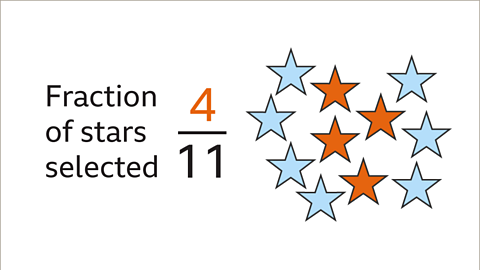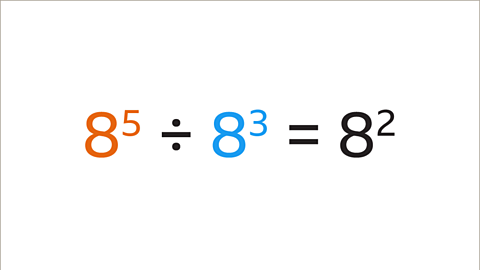Compound interest
Compound interest is paid or earned not only on the original amount but also on the interest added each year.
Example
A builder borrows ÂŁ5000 from her bank. It will be paid back after 3 years with compound interest added at 4% per annum.
How much will she have to pay back after 3 years?
Solution
- At the end of Year 1, she will owe ÂŁ5000 + 4% of ÂŁ5000.
5000 + 5000 x 0.04 = ÂŁ5200 - At the end of Year 2, she will owe ÂŁ5200 + 4% of ÂŁ5200. 5200 + 5200 x 0.04 = ÂŁ5408
- At the end of Year 3, she will owe ÂŁ5408 + 4% of ÂŁ5408. 5408 + 5408 x 0.04 = ÂŁ5624.32
Answer:
The builder will owe ÂŁ5624 after 3 years.
Alternative method
For the end of Year 1, instead of multiplying ÂŁ5000 by 0.04 and adding ÂŁ5000, we could multiply ÂŁ5000 by 1.04.
We could do this for the next two years also.
Therefore, a much quicker calculation is:
5000 x 1.04 x1.04 x 1.04 or
5000 x 1.04Âł = ÂŁ5624.32
Answer:
The builder will owe ÂŁ5624 after 3 years.
Example
Jessica invests ÂŁ35000 for 4 years at 6% compound interest.
How much will her investment be worth after this time?
Solution
The compound interest is 6%, so we need to multiply by 1.06 each year.
There are 4 years to calculate, so the calculation is:
35000 x 1.06⎠= 44186.6936
Answer:
Jessicaâs investment is worth ÂŁ44186.69 (to the nearest penny).
Question
Marcus borrows ÂŁ2400 and has arranged to pay it back at the end of 3 years. He will be charged 3.5% compound interest per annum.
(Per year is sometimes written as âper annumâ.)
How much does he owe at the end of the 3 years?
Solution
The compound interest is 3.5%, so we need to multiply by 1.035 each year.
The loan is over 3 years, so the calculation is:
2400 x 1.035Âł = 2660.9229
Answer:
Marcus owes ÂŁ2660.92 (to the nearest penny).
Taxation
Tax is money collected by the government to provide public services.
The most common taxes are income tax and value-added tax (VAT).
Income tax is money deducted from salary or wages. The amount you pay will depend on how much you earn. Typically, the first portion of income isnât taxed. This is called your personal allowance.
The rest of your salary above your personal allowance is called taxable income. This is the money your income tax is calculated on.
VAT is a tax which has to be paid when you buy items in a shop, restaurant or online. It is also added for some services such as building work or car repairs.
Example
The table below shows the income tax rate which is applied to different annual incomes in the UK.
| Tax Band | Taxable Income | Tax Rate |
|---|---|---|
| Personal Allowance | Up to ÂŁ12570 | 0% |
| Basic Rate | ÂŁ12571 to ÂŁ50270 | 20% |
| Higher Rate | ÂŁ50271 to ÂŁ125140 | 40% |
| Additional Rate | Over ÂŁ125140 | 45% |
How much income tax do the following people pay per year?
Anna who earns ÂŁ12000 per annum.
Solution:
| Tax Band | Taxable Income | Tax Rate |
|---|---|---|
| Personal Allowance | Up to ÂŁ12570 | 0% |
| Basic Rate | ÂŁ12571 to ÂŁ50270 | 20% |
| Higher Rate | ÂŁ50271 to ÂŁ125140 | 40% |
| Additional Rate | Over ÂŁ125140 | 45% |
Anna earns less than ÂŁ12570, so her tax rate is 0%.
She does not have to pay any income tax.
Answer:
Anna pays zero income tax.
Mark who earns ÂŁ25000 per annum.
Solution:
| Tax Band | Taxable Income | Tax Rate |
|---|---|---|
| Personal Allowance | Up to ÂŁ12570 | 0% |
| Basic Rate | ÂŁ12571 to ÂŁ50270 | 20% |
| Higher Rate | ÂŁ50271 to ÂŁ125140 | 40% |
| Additional Rate | Over ÂŁ125140 | 45% |
Mark will have to pay income tax at a rate of 20% but will not have to pay any on the first ÂŁ12570.
His taxable income is ÂŁ25000 - ÂŁ12570 = ÂŁ12430 20% of 12430 = 12430 x 0.2 = ÂŁ2486
Answer:
Mark pays ÂŁ2486 in income tax.
Question
Avaâs monthly salary is ÂŁ2245. How much income tax will she pay per annum?
Solution:
First, calculate Avaâs yearly salary.
ÂŁ2245 x 12 = ÂŁ26940
The table shows that she will have to pay income tax at a rate of 20% but will not have to pay any on the first ÂŁ12570.
Her taxable income is 26940 â 12570 = ÂŁ14370 20% of ÂŁ14370 = 14370 x 0.2 = ÂŁ2874
Answer:
Ava pays ÂŁ2874 in income tax.
Test yourself
More on M2: Number
Find out more by working through a topic
- count1 of 6

- count2 of 6
